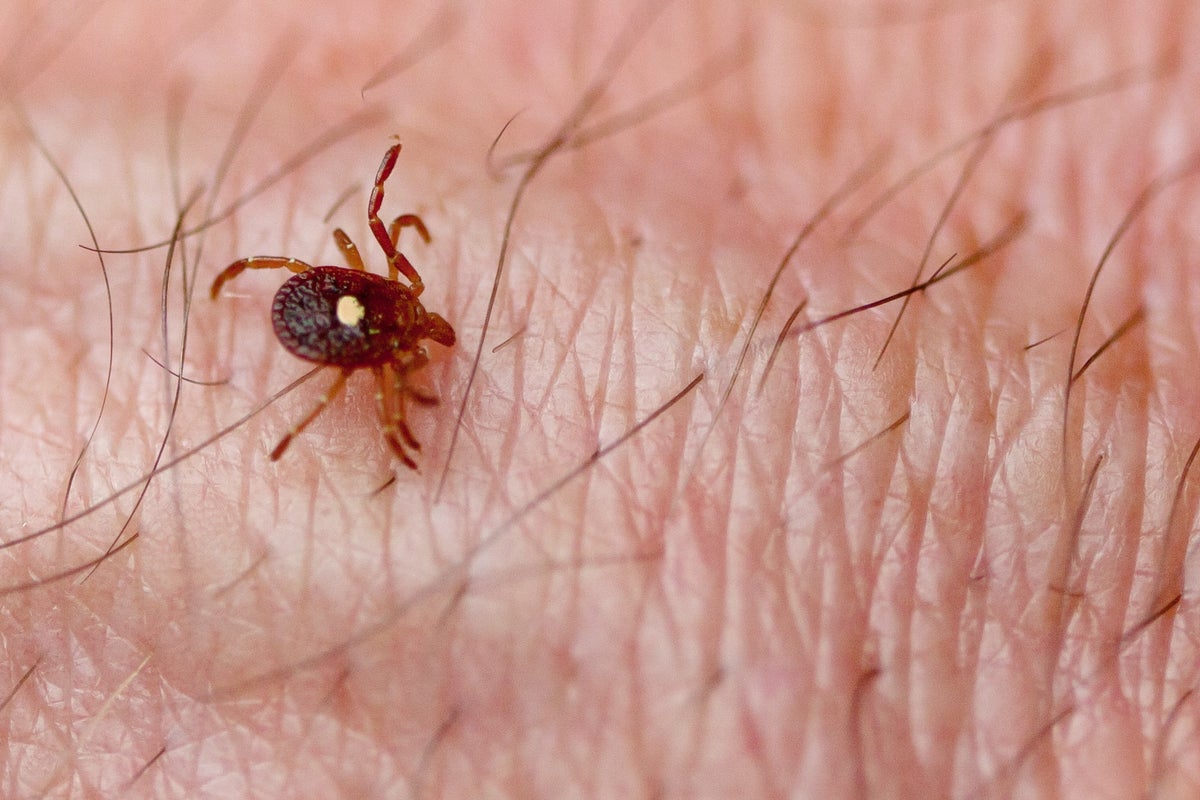
The first person has died due to alpha-gal syndrome, a life-threatening allergy to red meat that can manifest following a tick bite.
The unidentified 47-year-old New Jersey man had been healthy up until a camping trip with his wife and kids in the summer of 2024, UVA Health explained Thursday.
One night, the family ate a late steak dinner at 10 p.m. The airline pilot then woke up at 2 a.m., experiencing severe abdominal pain, diarrhea and vomiting.
He had recovered by the morning, but told his son: “I thought I was going to die.”
Two weeks later, he went to a barbecue and ate a hamburger at around 3 p.m. Four hours later, he started to feel ill.
The man went to the bathroom at 7:20 p.m. His son found him collapsed on the floor and surrounded by vomit, 10 minutes later.
The son called 911 and attempted to revive his father. Paramedics who arrived at their house took over the efforts for two hours, during which the man was taken to the hospital.
But, doctors could not revive him and he was declared dead at 10:22 p.m.
A medical examiner found no significant abnormalities in the man’s heart, brain, respiratory or abdominal health. His autopsy was deemed inconclusive and his cause of death was reported as “sudden unexplained death.”
However, his wife wanted to know why her husband had died. She contacted a doctor to review his autopsy who subsequently involved UVA Health allergist Dr. Thomas Platts-Mills, hoping to understand if alpha-gal syndrome could have played a role.
Platts-Mills and doctors at UVA Health tested a sample of the man’s blood for a range of allergens and found it had had been sensitized to alpha-gal.
The blood also indicated the man had had an extreme reaction, in line with what is seen in fatal anaphylaxis: an extreme allergic reaction that makes it hard to breathe and causes hives.
When the man’s wife told Platts-Mills her husband had gotten 12 or 13 bites from microscopic mites known as chiggers over the summer, the doctor realized many of those bites were actually from lone star tick larvae.
Platts-Mills said he and his colleagues also suspect that the beer the man had the day of his death, and exposure to ragweed pollen, may have contributed to the severity of his reaction.
“The important information for the public is: First, that severe abdominal pain occurring three to five hours after eating beef, pork or lamb should be investigated as a possible episode of anaphylaxis; and, second, that tick bites that itch for more than a week or larvae of ticks often called ‘chiggers’ can induce or increase sensitization to mammalian-derived meat,” said Platts-Mills.
“On the other hand, most individuals who have mild to moderate episodes of hives can control symptoms with an appropriate diet,” he added.
While it was previously believed that alpha-gal syndrome was solely tied to lone star ticks, researchers have identified two other species that can elicit an allergic reaction.
Deer ticks and western black-legged ticks have also been tied to alpha-gal. Tick activity is heightened in the summer months, leaving Americans – largely in the eastern U.S. – exposed.
When ticks bite us, scientists believe they can spread the sugar molecule alpha-gal into peoples’ bodies, disrupting their immune systems.
That’s how they become sensitized to the alpha-gal molecule also found in mammalian meat, such as beef, pork, or lamb.
There is no cure for the condition, and anaphylaxis can be deadly without treatment with a shot of prescription medicine called epinephrine, also known as adrenaline.
People may also experience nausea, vomiting and develop a rash about two to six hours after eating something with alpha-gal, according to the Mayo Clinic.
There have been about 110,000 suspected cases across the U.S. from 2010 to 2022. However, researchers think that may be an undercount and delayed symptoms make it hard to diagnose.
